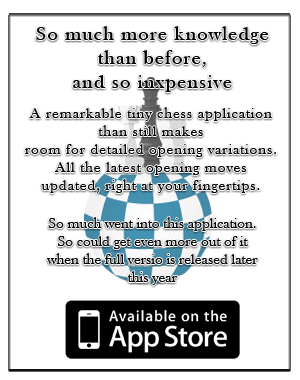BLINDFOLD CHESS
Buzecca, a Muslim, was the first blindfold player in Europe, playing two games blindfold in Florence in 1265. It took 518 years before three games were played blindfold, by Philidor in 1783. One newspaper wrote ‘This exertion of Mr. Philidor’s abilities appear one of the greatest of which the human memory is susceptible’. In 1858 Paul Morphy played few times against eight players.
In 1859 Louis Paulsen played fifteen games blindfold simultaneously (+12=2-1). In 1874 the Czech Jan Dobrusky (1853-1907) won the first blindfold tournament. In 1876 Johannes Zukertort improved the record by playing with 16 players (+12=3-1). In 1902 the American H.Nelson Pillsbury one of the best players of his time know for his fabulous memory played against 20 opponents (+3=11-3). In 1919 the Czech Richard Reti improved for the first time the world record with 24 games. The Hungarian Gyula Breyer played 25 opponents in 1921 (+15=7-3). In 1924 three days after the great New York tournament, Alexander Alekhine will play 26 players (+16=5-5) then the following year 28 players (+23=2-2). The same year Reti will add one more unit to the record of Alekhine (+20=7-2).
In 1931 the Belgian Georges Koltanowski was the first to break the number 30 (+20-10). In 1934 for the last time Alekhine held the record with 32 opponents (+19=9-4) but three years later in 1937 Koltanowski got it back with 34 players (+24=10). In 1943 in Argentine, the local Master Miguel Najdorf in 17 hours and 35 minutes broke the number of 40 opponents (+36=1-2) four years later after an exhibition of 24 hours he will increase the number to 45 games (+39=4-2). Finally, in 1960 in Budapest, the Hungarian Master Janos Flesch will break all the records with an outstanding performance of 56 opponents (+31=18-3). Let’s also include in the list of blind chess masters the English Joseph Blackburne who from 1850 to 1870 played incredible numbers of blindfold chess simultaneous exhibitions, the German Friedrich Sämisch and also problem composers like Sam Loyd, and Thomas Dowson. No Soviet players were record holder as blindfold chess was forbidden by law in the former Soviet Union because it was considered artistically pointless and harmful to one’s mental health. On Dec 3, 2016, Timur Gareyev played 48 opponents sitting on an exercise bike, resulting in 35 wins, 7 draws, and 6 losses.
Between 1992 and 2011 a blindfold tournament with the best world players was organized in Monaco/Nice every year. Each player used a computer screen with an empty chess board and a mouse to send the move to his opponent. A similar tournament was also organized in Bilbao in 2007.

Here is the regulation used for such event:
RULES OF BLINDFOLD GAMES
Play will be governed by the FIDE Laws of Chess, except where they are overridden by the following rules.
Players are not allowed to record the moves.
At the start of the game each player has twenty-five minutes on his clock. Before a player makes his move twenty seconds will be added to his remaining time.
The computer clock marks the end of the time-control period.
The monitor will show the players when the same position has appeared on the board three times or that the “50 moves rule” can be applied. In this case either player has the right to claim a draw.
If a player makes an illegal move, the monitor will display the message: “Illegal move, make another move”. In this case there is no need for additional action by the player.
If a player needs the assistance of the arbiter, he may call the arbiter. The arbiter will in this case interrupt the game; interrupting of the game takes about 5 seconds. In this situation the players may not leave the playing area of the playing hall and may not watch the position on the monitors.
Players, who leave the playing area without permission of the arbiter, will lose the game immediately.



